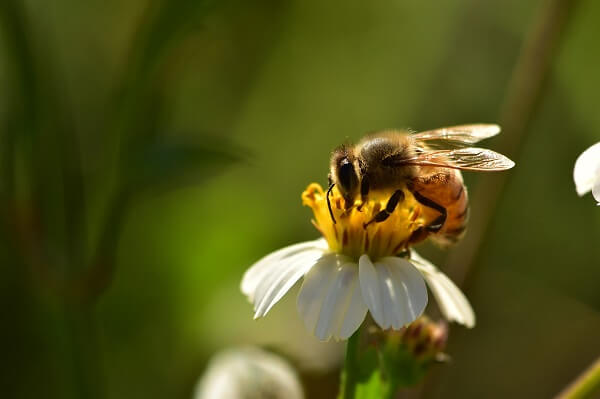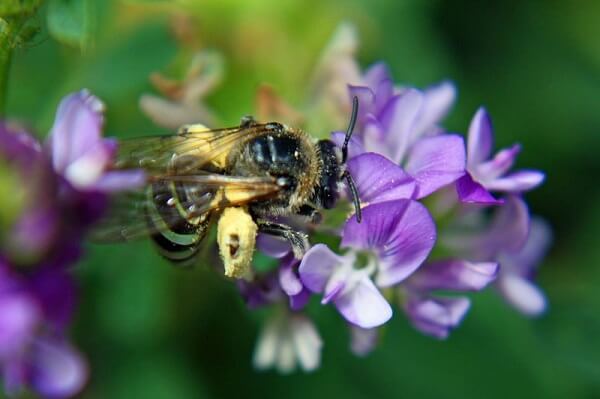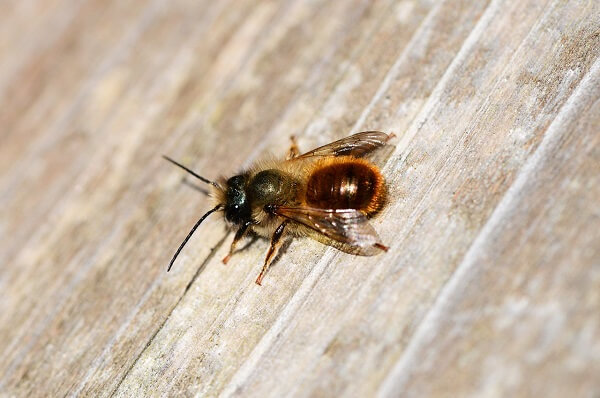Honeybees and other pollinators are paramount to our food supply production. The USDA estimates that the honeybees are accountable for ALL but 20% of our crop pollination and that 33% of our food consumption come from insect-pollinated crops. Of the over 19,000 familiar bee species, the Apis Mellifera (western honeybee) is used generally for pollinating plants. Some of the crops bees pollinate are alfalfa, apricot, avocado, beet, broccoli, cabbage, carrot, celery, cauliflower, cherry, chestnut, cotton, cucumber, guava, kiwifruit, okra, onions, peach, squash, strawberry, etc.
Bee Background
- A colony of bees consists of the queen bee, a few thousand drones (male bees), and a huge number of infertile female foragers. The foragers feed the larvae with royal jelly. Then the larvae, except for the one that develops into the queen bee, get switched to pollen.
- The queen bee stays on the royal jelly. It goes away from its home and mates with several drones, which perish during the mating. The queen bee returns and lays its eggs, approximately 1,500 a day, in a honeycomb cell. Queen bees can live up to eight years.
- Honeybees are not inactive through the winter. They consume their honey to protect them from the freezing cold. The female honeybees are the only ones with stingers. They drive intruders away when their hives are threatened.
Attracting Honeybees as Pollinators
Honeybees and plants benefit each other. The bees gather the flowers’ pollen and nectar for energy and food source, and the flowers need the bees for pollination.
- If you want better pollination, find out which pollinator is most efficient for your specific plants. Learn about their habitat, and create the environment for them. E.g., most honey bees prefer dry, sunny places.
- You can make an undisturbed spot of ground for honeybees near your plants. You will also need to make available forage food for the bees. Red clover is excellent.
- There are bee nesting cylinders and special boxes available in the market today, if you want to try beekeeping. You may prefer solitary bees as they are gentle and are fine with humans.
- Note that bee stings are the bees’ protection against intruders. If bee stings irritate your skin, it does not always mean that you are allergic to them. See your allergist and, if you are truly allergic, see if a series of shots can help prepare you for beekeeping. If not, find other avenues for your pollinators.
Some Types of Bees
- Bumblebees are normally around by midsummer. Their colonies usually do not survive the winter cold.
- Carpenter bees are solitary bees that are around in the early spring. They are usually mistaken for bumble bees.
- Alkali bees, also solitary bees, like to nest in moist alkaline soil
- Mason bees are likewise solitary bees that are inactive during the summer. They are good pollinators for spring fruit.
- Sweat bees and leaf cutting bees are better pollinators than the honeybees.
Use of Insecticides Hurt Honeybees
- Spray programs for pesky insects like mosquitoes and gypsy moths will also kill bees. Be very alert about what you are using.
- When you apply natural herbicides, do them in the evening time when the bees are nesting. Do not spray close to the hives either.
- There are also predatory birds and rapacious insects like crab spiders that hide in flowers that bees visit.
Honeybees are indeed disappearing at an alarming rate, threatening crop production. Being careful is within our control!













